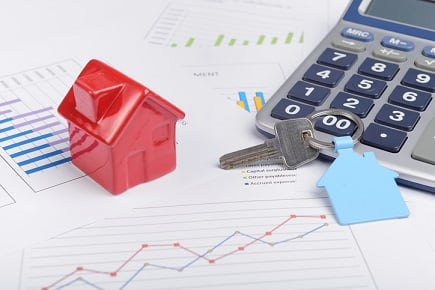With half of all U.S. renters spending more on rent, a new report focuses heavily on the affordability crisis and what needs to be done to solve it

Signs are pointing to a healthy multifamily market in 2020, but according to a new report, a large emphasis still needs to be placed on the affordability crisis across the country.
More than 20 million households—half of all renters across the country—are spending more than 30% of their household income on rent, according to the Walker and Dunlop winter multifamily outlook report. This ratio of income to housing costs is considered to be an affordability burden.
The report also found that affordability is not just an income issue. In 10 states, more than half of renters are rent-burdened. Seven of the 10 states, including California, Hawaii, Delaware, Connecticut and New York, have above average household incomes.
Even though the median renter in San Francisco makes over $95,000 each year, rents in some areas exceed $4,700 a month for a one-bedroom unit. If you apply the 30% rule here, that means a renter would need to be making over $190,000 to afford the unit.
Land regulations and availability, along with construction fees and processes, play a large part in determining housing costs, according to the report. This results in developers not being able to deliver less expensive units in high-growth markets.
While the strong job market at the start of this year is leading to increased incomes, expenditures are also rising. The report says while the economy could remain in slow-growth mode, the market is not without risk.
“Going forward, any corporate weakness that impacts employment levels could spill into consumption levels throwing the economy into a recession,” the report stated. It cites global economic slowing, US-China trade uncertainty, the negative interest rate environment, and geopolitical uncertainty as downside risks to the economy.
The housing market continues to show growth with home prices up by 3.2% year-over-year in September 2019. Apartment vacancy rates remain near lowest levels over the past two decades across the country. Of the largest 80 markets, 55 recorded vacancy rates less than 7%, the report found. Rent also went up by 2% or more in almost all those markets. Rent growth was over 5% in Austin, Las Vegas and Nashville, among other cities. Rent also increased in New York and San Francisco, despite average rents already being well above $2,000 a month.
“The apartment market is expected to remain balanced in the near-term, characterized by high occupancy rates and positive rent growth. High single-family housing costs in growth markets and a delay in family formation and homeownership by Millennials will continue to support rental demand.” Homeownership rates haven’t changed much compared to last year with almost two-thirds of US homes being owner-occupied.
Despite new housing stock and fast pace of apartment absorption, affordability continues to be top of mind across the country. Oregon, California and New York all passed rent control laws last year, and the report says another dozen states are looking at doing something similar.
Given disparities in housing needs, Walker and Dunlop looked at some new approaches to alleviating the affordability crisis. One of these is reduced costs through corporate subsidies.
“Apple, Facebook, Google, Amazon, and Microsoft have pledged over $5 billion to various housing initiatives, many of which are in the high-cost Silicon Valley and Seattle markets.” Other initiatives include increased density through micro-units and co-living, smaller sized units and cheaper finishes, as well as new construction processes aimed to reduce cost and time needed to develop new housing stock.
“While not all housing types will work in every market, areas with job growth and balanced demographics will continue to have demand for new housing in years to come,” the report reads.



